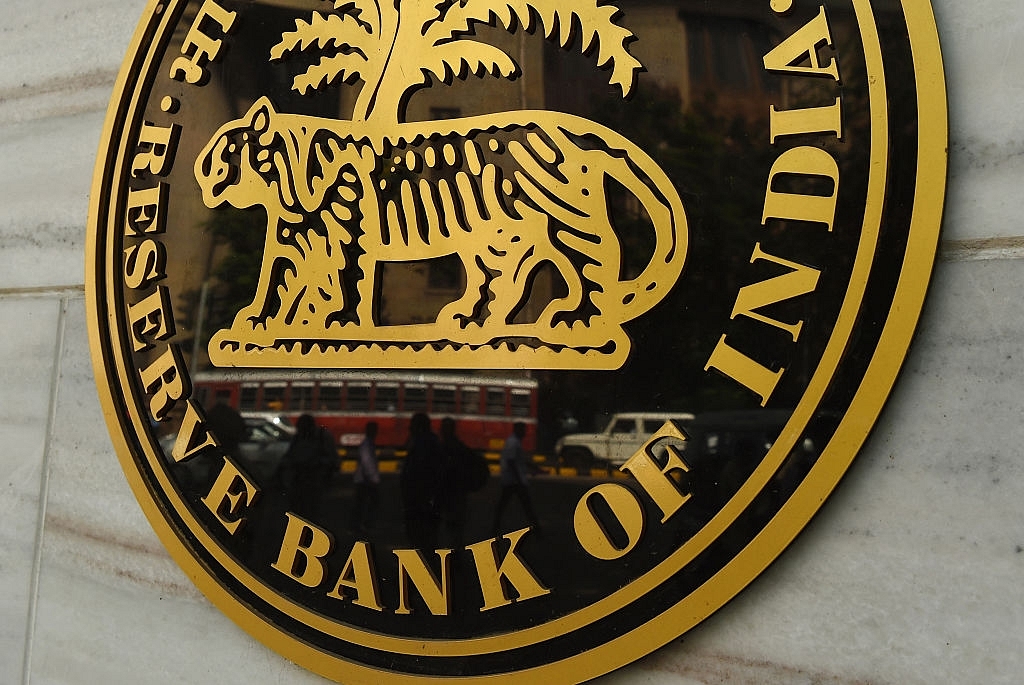Economy
The Non-Monetary Dividend Of Demonetisation
- For RBI to add the liability on the cancelled currency notes and then immediately declare a dividend to the Government would be bad optics

The RBI logo (PUNIT PARANJPE/AFP/Getty Images)
I had a chat with Andy Mukherjee (he is a Bloomberg gadfly columnist) in the immediate aftermath of the demonetisation announcement in India on November 8. Perhaps, we spoke on November 11. At that time, we were both unsure of how the cancellation of Rs. 500 and Rs. 1000 notes would play out in the balance sheet of the Reserve Bank of India.
I took the view that the central bank cannot cancel the liability and that new currencies keep getting created. I thought that there is no cancellation of liabilities in the RBI balance sheet. I wrote to a few people and they appeared to endorse what I wrote. But, Sajjid Chinoy responded to my email and in his email, he mentioned that both the German Bundesbank and the Bank of Israel had cancelled liabilities and added them to the central bank income or reserves.
Both were non-discriminatory moves. Bundesbank had done that when the Euro was introduced. They had promised to redeem German marks into the Euro without any limitation of time. But, they decided to cancel a particular series of notes because those currency notes were never returned whereas other notes in the same series had been exchanged. So, they cancelled them in 2004 and added the amount to other income. See attached note.
Could not get much information out of what Bank of Israel did. Their profits arose when they introduced new currency notes with new designs and cancelled the old ones. In fact, they seem to have done this kind of complete re-design at least thrice in their short history. The Bank of Israel appears to have taken profits in 2010 on cancellation of old notes and the associated liabilities.
I got this information from pages 9-11 of the KPMG report on central bank accounting practices. You can see the report here and download it.
However, it is one thing to cancel liabilities (currency in circulation) and another thing to transfer it to the government immediately. I still believe that RBI would honour the ‘promise to pay’ for some more time before extinguishing all its liabilities. For RBI to add the liability on the cancelled currency notes and then immediately declare a dividend to the Government would be bad optics and would erode credibility of both.
Andy Mukherjee had written a strongly worded Facebook post on this matter:
“Demonetisation has three stated objectives 1: Freeze black money. 2. Kill fake notes. 3. Stop terror financing. Why has it suddenly become important to generate a dividend from this exercise?And no, nobody will take sacks of black money to the RBI to launder. A PAN card would be demanded, and a tax raid would follow. So I really don’t get the fascination with a $45 billion dividend.”
He is right. The government should tread carefully here lest it boomerang in many ways and for many reasons.
But, that said, my ‘Demonetisation update 3‘ is wrong. My friend Vasan Shridharan gave a simple example: assume that the RBI issued 50,000 rupees of new currency and bought only foreign exchange with it and that there are no other entries in the balance sheet. Supposing it proceeds to cancel these notes, the fact remains that it has foreign currency assets. There has to be a corresponding non-monetary liability. Hence, the cancelled ‘currency in circulation’ would have to be added to Reserves.
This post was first published on The Gold Standard and has been republished here with permission.
Support Swarajya's 50 Ground Reports Project & Sponsor A Story
Every general election Swarajya does a 50 ground reports project.
Aimed only at serious readers and those who appreciate the nuances of political undercurrents, the project provides a sense of India's electoral landscape. As you know, these reports are produced after considerable investment of travel, time and effort on the ground.
This time too we've kicked off the project in style and have covered over 30 constituencies already. If you're someone who appreciates such work and have enjoyed our coverage please consider sponsoring a ground report for just Rs 2999 to Rs 19,999 - it goes a long way in helping us produce more quality reportage.
You can also back this project by becoming a subscriber for as little as Rs 999 - so do click on this links and choose a plan that suits you and back us.
Click below to contribute.
Latest